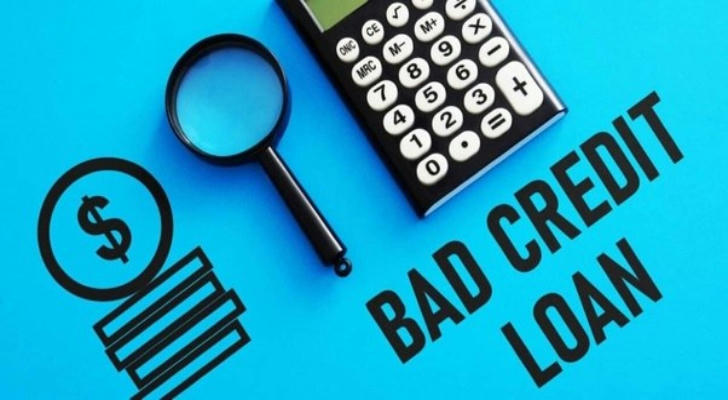Need Money Urgently But Have Bad Credit? Bad Credit Loans Might Help You Out!
In modern society, loans have become an important way for many people to solve financial problems. However, a poor credit history often makes it difficult to secure a loan. If you are facing such a dilemma, bad credit loans might be your lifesaver! This article will explore the requirements, application process, pros and cons, and precautions of bad credit loans in detail, helping you fully understand this type of loan and find a solution that suits your needs.

What is a Bad Credit Loan?
Bad credit loans are specifically designed for individuals with poor credit histories. Compared to traditional loans, these loans have lower credit score requirements but usually come with higher interest rates and fees. The target audience for these loans includes:
People with low credit scores
Individuals with a history of late payments
Those who have gone through bankruptcy or debt restructuring
The main purpose of bad credit loans is to provide financial support to those who cannot obtain loans through traditional channels, helping them overcome short-term financial difficulties.
What Are the Requirements for Bad Credit Loans?
Although the threshold for bad credit loans is lower, borrowers still need to meet some basic conditions. Below are the common requirements for bad credit loans:
1. Age Requirement
- Most lenders require borrowers to be at least 18 or 21 years old, depending on the institution.
2. Proof of Income
- Borrowers need to provide proof of a stable income source, such as pay stubs, bank statements, or tax records. This is to ensure the borrower's ability to repay the loan on time.
3. Proof of Residence
- Lenders usually require borrowers to provide valid proof of residence, such as utility bills, rental agreements, or property deeds.
4. Bank Account
- Borrowers need to have a valid bank account to receive the loan and make repayments.
5. Credit History
- Although bad credit loans have lower credit score requirements, some lenders may still review the borrower's credit report to assess their repayment ability and risk.
6. Other Requirements
- Some lenders may require borrowers to provide a guarantor or collateral to reduce loan risk.
How to Apply for a Bad Credit Loan?
The application process for bad credit loans is relatively simple, but the following steps should be followed:
1. Assess Your Needs
- Before applying for a loan, clarify your financial needs and repayment ability to avoid over-borrowing.
2. Compare Different Lenders
- Interest rates, fees, and repayment terms vary across lenders. It's recommended to shop around and choose the option that best suits your needs.
3. Prepare Required Documents
- Prepare necessary documents such as ID proof, income proof, and residence proof as required by the lender.
4. Submit Your Application
- Submit your loan application online or offline and wait for the review results. Some lenders may request an interview or additional documents.
5. Sign the Agreement and Receive the Loan
- If your application is approved, carefully read the loan agreement, confirm details such as interest rates, fees, and repayment terms, sign the agreement, and wait for the loan to be disbursed.
Advantages of Bad Credit Loans
1. Low Threshold
- Bad credit loans have lower credit score requirements, making them suitable for individuals with poor credit histories.
2. Fast Approval
- Compared to traditional loans, bad credit loans have a simpler approval process and faster disbursement.
3. Helps Repair Credit
- Making timely repayments can help gradually improve your credit history, paving the way for better loan terms in the future.

Risks of Bad Credit Loans
1. High Interest Rates and Fees
- Bad credit loans typically come with higher interest rates and fees, increasing repayment pressure.
2. Risk of Fraud
- Some scammers take advantage of people in urgent need of funds. Stay vigilant and cautious.
3. Debt Trap
- If you fail to repay on time, you may fall into a debt trap, negatively impacting your credit and quality of life.
How to Choose the Right Bad Credit Loan?
1. Choose a Reputable Lender
- Select a licensed and reputable lender to avoid falling victim to loan sharks or scams.
2. Understand Loan Terms
- Carefully read the loan agreement to understand key details such as interest rates, fees, and repayment terms.
3. Assess Repayment Ability
- Ensure you have a stable income source to make timely repayments and avoid defaults.
4. Seek Professional Advice
- If you have questions about the loan application process, consult a professional financial advisor or credit agency.
Alternatives to Bad Credit Loans
If you are concerned about the high interest rates and risks of bad credit loans, consider the following alternatives:
1. Credit Repair
- Gradually improve your credit history by making timely repayments and reducing debt.
2. Secured Loans
- If you have a guarantor or collateral, you can apply for a secured loan, which usually comes with lower interest rates.
3. Borrow from Friends or Family
- Borrowing from friends or family may be a lower-cost option, but be mindful of maintaining relationships.
4. Government or Non-Profit Assistance
- Some government agencies or non-profit organizations offer low-interest or interest-free loans to help low-income individuals with financial difficulties.
Conclusion
Bad credit loans provide a way for individuals with poor credit histories to access funds, but they should be chosen carefully, and risks must be managed. Before applying, make sure to understand the requirements and risks, and choose a reputable lender. At the same time, work on repairing your credit and improving your financial planning to create more opportunities for the future.
